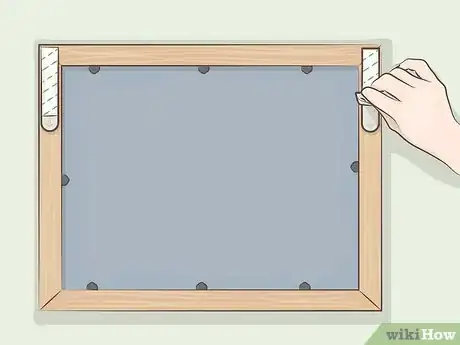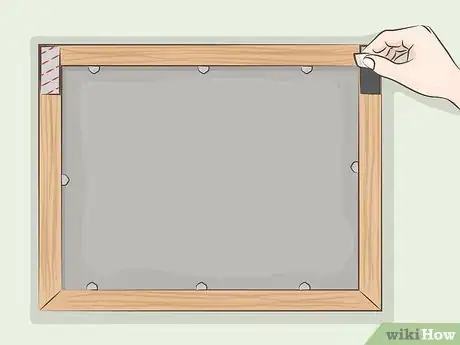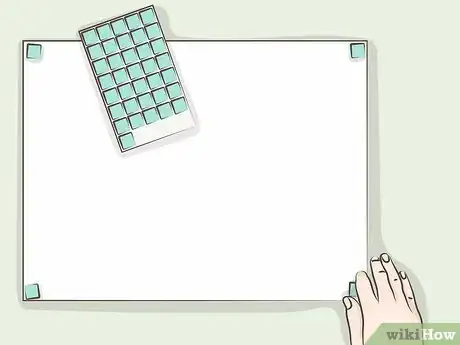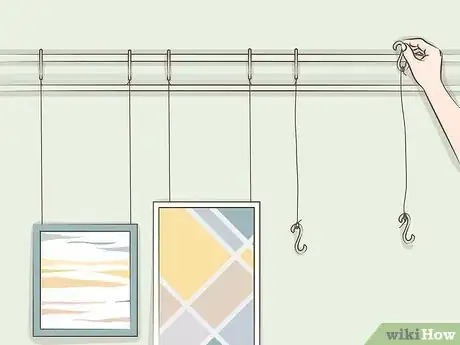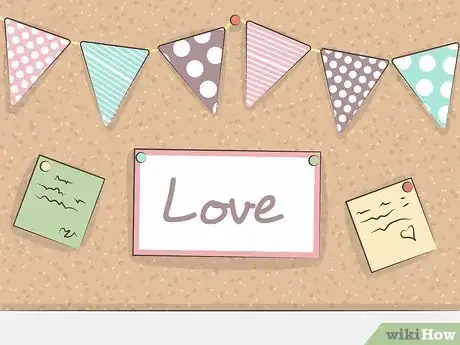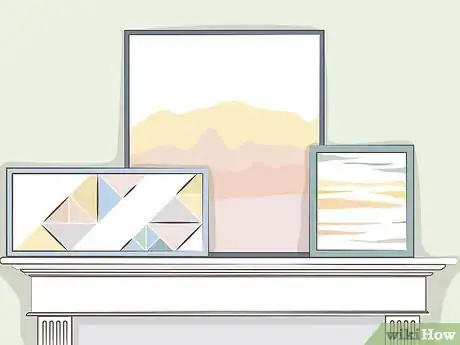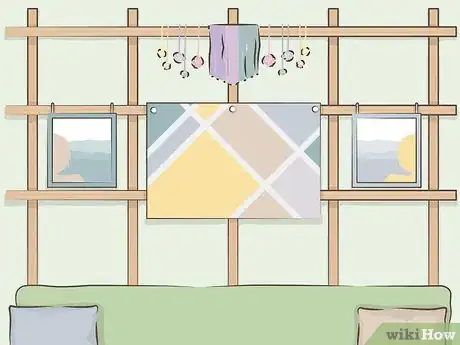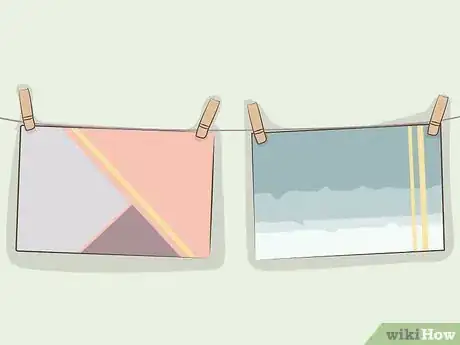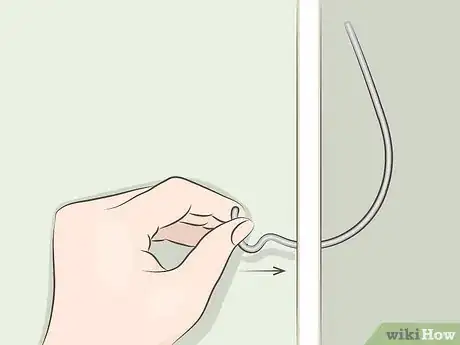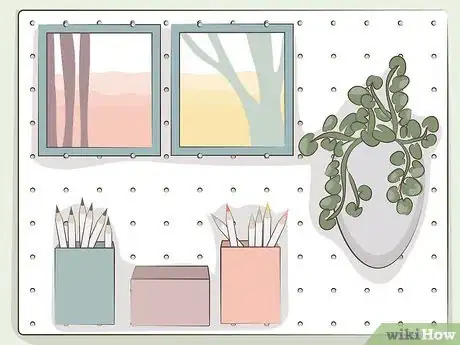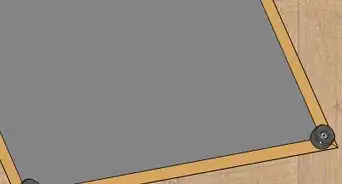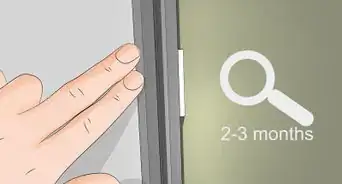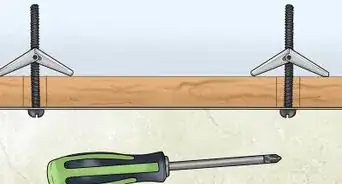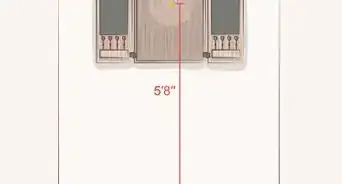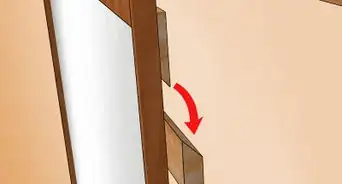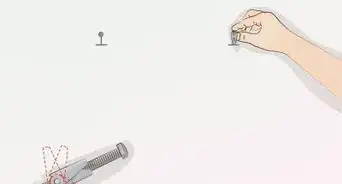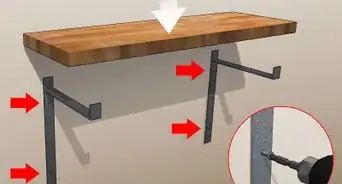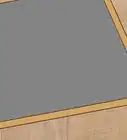This article was co-authored by Jason Phillip. Jason Phillip is a handyman specializing in mounting and hanging objects onto walls. With over five years of experience professionally mounting and installing objects through his company, Jason's Handyman Services, Jason's work includes working with mounting window AC units, designing art gallery walls, installing kitchen cabinets, and replacing light fixtures on drywall, brick, and plaster. He has been rated a "Top Pro" every year since 2016 by Thumbtack for being one of the highest-rated, most popular professionals on Thumbtack.
There are 11 references cited in this article, which can be found at the bottom of the page.
This article has been viewed 109,892 times.
One of the biggest deterrents to hanging up decorations, especially if you’re a renter and worried about your security deposit, is not wanting to damage your walls. However, there are ways to get around this with a little creativity. From using adhesive hangers or cork boards to taking advantage of architectural features like mantels and molding, you can easily hang any item without leaving a mark on your wall. Don’t wait any longer to decorate with that stuff that’s been sitting on your floor or in a closet waiting to find a home on your walls!
Steps
Expert Q&A
Did you know you can get expert answers for this article?
Unlock expert answers by supporting wikiHow
-
QuestionHow can I hang something without using nails?
 Jason PhillipJason Phillip is a handyman specializing in mounting and hanging objects onto walls. With over five years of experience professionally mounting and installing objects through his company, Jason's Handyman Services, Jason's work includes working with mounting window AC units, designing art gallery walls, installing kitchen cabinets, and replacing light fixtures on drywall, brick, and plaster. He has been rated a "Top Pro" every year since 2016 by Thumbtack for being one of the highest-rated, most popular professionals on Thumbtack.
Jason PhillipJason Phillip is a handyman specializing in mounting and hanging objects onto walls. With over five years of experience professionally mounting and installing objects through his company, Jason's Handyman Services, Jason's work includes working with mounting window AC units, designing art gallery walls, installing kitchen cabinets, and replacing light fixtures on drywall, brick, and plaster. He has been rated a "Top Pro" every year since 2016 by Thumbtack for being one of the highest-rated, most popular professionals on Thumbtack.
Installation Specialist
References
- ↑ https://www.apartmenttherapy.com/how-to-hang-a-p-92595
- ↑ Jason Phillip. Handyman. Expert Interview. 2 July 2020.
- ↑ https://www.architecturaldigest.com/story/how-to-hang-a-tapestry
- ↑ https://www.homedit.com/5-rent-friendly-ways-to-display-art-without-damaging-your-walls/
- ↑ https://www.housebeautiful.com/design-inspiration/g4109/how-to-hang-art-without-nails/?slide=8
- ↑ https://www.housebeautiful.com/design-inspiration/g4109/how-to-hang-art-without-nails/?slide=1
- ↑ https://www.housebeautiful.com/design-inspiration/g4109/how-to-hang-art-without-nails/?slide=12
- ↑ https://www.housebeautiful.com/design-inspiration/g4109/how-to-hang-art-without-nails/?slide=5
- ↑ https://www.housebeautiful.com/design-inspiration/g4109/how-to-hang-art-without-nails/?slide=3
